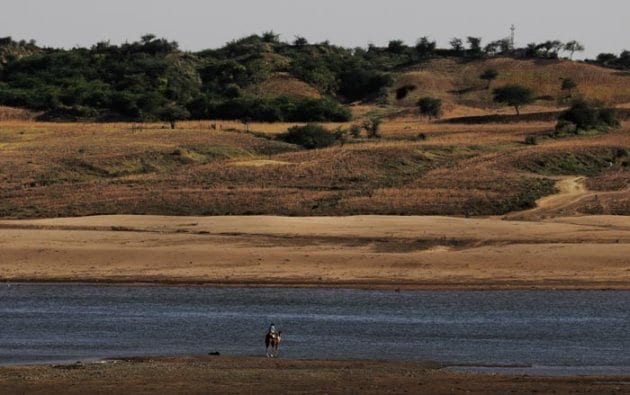Chambal river- Protected by a curse, faces the modern world
The Chambal is no longer synonymous with lawlessness, instead, it means cheap land and untapped resources.
 1 / 13
1 / 13The fears that shaped this region go back more than a thousand years, to when sages said the Chambal had been cursed and villagers whispered that it was unholy and avoided planting along the poor-quality soil in the river’s banks. (Source: AP photo)
You’ve Read Your Free Stories For NowSign up and keep reading more stories that matter to you.Already have an account? Sign InThis story requires a subscriptionSelect a plan and use IE10 code to get 10% extra offAlready a subscriber? Sign inThis story requires a subscriptionSelect a plan and use IE10 code to get 10% extra offThis content is exclusive for our subscribers.Subscribe now to get unlimited access to The Indian Express exclusive and premium stories.Already a subscriber? Sign In- 2 / 13
Camels, carrying provision, across the Chambal River near Bhopepura village, in the northern Indian state of Uttar Pradesh. (Source: AP photo)
- 3 / 13
Hundreds of species of birds — storks, geese, babblers, larks, falcons and so many more — nest along the river. (Source: AP photo)
- 4 / 13
Bells hang from an old temple built near the confluence of the rivers Yamuna, front, and Chambal, background. (Source: AP photo)
- 5 / 13
An elderly Indian village woman threshes lentil plants on the banks of the Chambal River near Bhopepura village. (Source: AP photo)
- 6 / 13
Villagers prepare for the cremation of an elderly woman on the banks of the Chambal River. (Source: AP photo)
- 7 / 13
An old temple stands near the confluence of the Rivers Yamuna, seen on left, and Chambal, on right, in Bhareh village. (Source: AP photo)
- 8 / 13
Indian villagers cross the River Chambal on a ferry near Bhopepura village in the northern Indian state of Uttar Pradesh. (Source: AP photo)
- 9 / 13
- 10 / 13
Flames rise from the cremation pyre of an elderly woman on the banks of the Chambal River near Bhopepura village, in the northern Indian state of Uttar Pradesh. (Source: AP photo)
- 11 / 13
Tucked in a hidden corner of what is now a deeply polluted region, where the stench of industrial fumes fills the air in dozens of towns and tons of raw sewage is dumped every day into many rivers, the Chambal has remained essentially wild. (Source: AP photo)
- 12 / 13
For hundreds of years, the outlaws ruled the labyrinth of scrub-filled ravines and tiny villages along the river. (Source: AP photo)
- 13 / 13
With India’s economic growth came troubles that threaten the Chambal and its wildlife: polluting factories, illegal sand mining and fish poachers who hack at gharials with axes. (Source: AP photo)